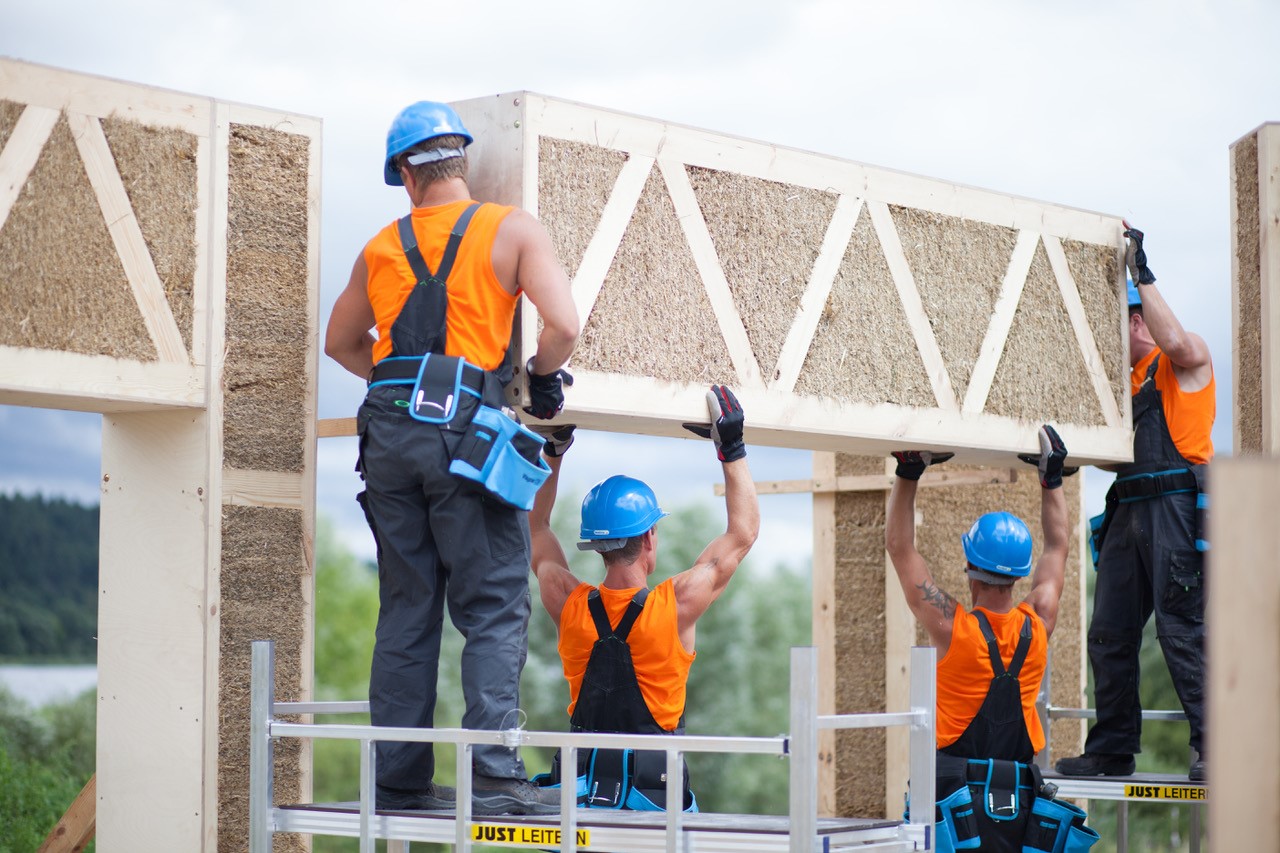When people, especially in the built environment, talk about “getting to zero”, they’re usually talking about the operation of buildings: ending our reliance on fossil fuels for heating, cooling and lighting. But getting to zero is nowhere near enough. Why? Imagine a village beside a lake upon which it depends for water, food, and other necessities. Now imagine that a few bountiful years have led to a swelling of the village’s population, causing rubbish and sewage to spill into the lake. Soon enough, people notice that fish are dying, plants are wilting, and the lake itself is growing strange blobs and giving off noxious odours. After a short period of commotion and argument, the villagers come to accept that they’re fouling their own nest and build a system to treat and divert any further wastes from flowing into the lake. They’ve gotten to zero. But the lake is still a mess. As in any injurious relationship, healing begins but doesn’t finish with only the cessation of harm. Both parties must acknowledge the injury, then work together to begin healing.
This means drawing down atmospheric carbon and safely storing it in the biosphere. Something like a trillion tons of retrieved CO2 would do, recovering most of the emissions we’ve generated during the Industrial Revolution. But where can we put those trillion tons? Right now the world’s oceans are acting as buffers, absorbing carbon dioxide at a fast pace, but acidifying in the process and wreaking havoc on the corals and other microbial life forms upon which, directly or indirectly, we depend. Not a good situation.
The most common answer to “where can we store carbon?”, at present, is underground. Extract carbon dioxide from the atmosphere and pump it down into deep geological chambers. The breath-taking irony of this scheme, at least in the USA, is that the American taxpayer ends up paying oil companies to extract and pump CO2 into their older oil fields, enabling, thereby, the further extraction of oil and gas.
We can do better.
There are two primary candidates for carbon storage here on the Earth’s surface: soil and buildings. We are happy to note a huge global effort to “re-carbonise” soils using organic and regenerative agriculture (often called carbon farming), but I’ll leave it to others to tell that emerging story (see, for example, Drawdown and its successor, Regeneration).
Which brings us to the global construction industry that generates 40% of greenhouse gas emissions. When we’re adding the equivalent of another New York City of buildings and infrastructure to the planet every month, planners can and must find ways to reverse the emissions engine: turn that massive demand for materials into a repository for carbon captured from the atmosphere, the feedstock of a new carbon architecture. My forthcoming book, Build Beyond Zero, lays out a map of a new climate-healing construction industry that can soon be absorbing billions of tons of carbon each year.
We’re already starting, just barely, to move in that direction. For example, we’re already using more and more agricultural wastes to make sheathing and insulation. Just the straw from cereal grains such as rice and wheat adds up to two billion tons annually, half of which is carbon “captured” courtesy of Mother Nature—roughly the equivalent of all emissions from the global iron and steel industry, or the country of India. We’re making large and tall structures, until now only possible with high-carbon steel and concrete, with mass timber frames and floors. (Mass timber, we must add, though a sort of poster child for carbon-storing architecture, is actually only climate-friendly when the timber is sustainably sourced.) And the big boy, concrete, is already starting a massive systemic change. Pound for pound concrete is very low carbon, but it is also ubiquitous: we pour ten billion tons of it annually on Earth, equal to a cube five times the height of the Eiffel Tower. Ten billion tons of anything will have a big impact, and right now the concrete industry accounts for 8% of global emissions. But it also stands poised to transform, in only a generation, into a massive absorber of emissions.
Zero is boring, zero isn’t enough. Let’s get to zero and then keep on going to a regenerative architecture that is far nicer to see and live in, more equitably available to all, and no longer a toxic assault on the rest of life with whom we share the planet.
You can buy Bruce King’s book from Island Press here
Bruce King is the founder of the Ecological Building Network (EBNet), and a registered engineer with forty years of worldwide experience in structural engineering and construction. He has organized three international conferences on ecological building, and is the founder of BuildWell Source, a user-based collection of low-carbon materials knowledge, and the BuildWell Symposia.
Read more:
- Materials






